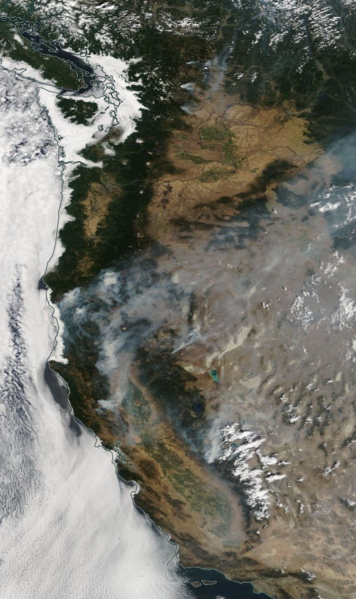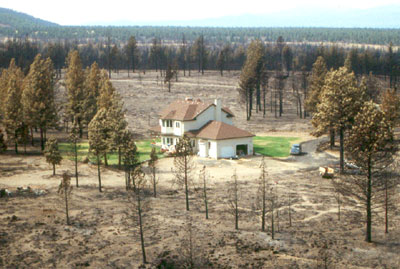mike.editor@midpush.com, updated 190409
Since the original date of publishing, 190116. Gavin Newsom has become Governor of California. He seems to agree with Trump that Calif needs to begin managing it’s forests better. He declared a “State-of-Emergency” on March 22, 2019. This action by the Democratic governor follows President Donald Trump’s repeated criticism of California’s wildfire prevention efforts. California’s esteemed legal community, still looks to PG&E as the fall guy however.
This week’s, 2019-Week-02, Weekly Whiner is none other than Donald Trump. On Jan 9th, 2019 Trump warned he would cut off federal funds to fight California fires. House Speaker Nancy Pelosi, D-Calif immediately took the emotional ground and responded that Trump’s threat, “insults the memory of scores of Americans who perished in wildfires last year & thousands more who lost their homes.“
The California and the Federal government both need to take a non-emotional look at how they want to handle fire prevention and fire fighting in the future.
The last two years, 2018(8,527 fires burning 1.893 million acres) and 2017(9,133 fires burning 1.381 million acres), have seen California have a number of deadly fires. The biggest of which are:
Camp Fire 2019 – The nation’s deadliest fire in a century. 153,336 acres, at least 85 people dead, 19,000 buildings destroyed. Nov 8-25.
Mendocino Fire 2019 – The largest California fire at 459,123 acres, 157 residences destroyed, 1 fire-fighter killed

Donald Trump has stated that California mismanages its forests. And Governor Brown and now newly elected Gavin Newsom have stated that California is a victim of climate change. They both have stated that Trump is wrong.
When I was a small boy, as a Boy Scout, I used to watch out the window as we drove off to go camping thru out the state. I used to see fire breaks everywhere to help prevent and fight, the fires that start easily in California forests as California does not receive any rain at all from May to sometimes November/December. Driving these same roads I no longer see these breaks, but I can still see where they were as the trees are smaller.
Where did these fire breaks go?

In the years of 1960-1990 foresters used to harvest 10-12 billion board feet from its national forest’s. Given California’s growth and housing need this should be a much larger figure 28 years later.
Then as the Sierra Club and other environmental groups started gaining more control, this harvest reached a low of 2.5 billion board feet in 2013. California became an mass importer of lumber. Effectively moving perceived environmental damage to another location, a common California tactic. Not to mention the extra trucking environmental costs to bring this imported lumber across the continent.
People had complained the loggers damaged the forest floor and harmed wildlife. The Spotted Owl was a poster child for the environment. California, to build the homes needed by its burgeoning population, switched to Canada as a provider of choice to build its homes. In addition, prescribed burns for Southern California’s chaparral and grasslands, done in the semi-moist period of March-May, were stymied by environmental lawsuits and air quality concerns.
If you go back a few hundred years, large portions of California would burn until the winter rains came. The Indian tribes have stories and legends of these fires. There was nothing anybody could do about it except stay out of the way. And it will continue.
California’s oak and redwood trees adapted to these fires that occurred every 15-20 years. California has a stated 3.5-million-person housing shortage. The homeless count is large and growing, the sanctuary state and city policies create a magnet, and a healthy economy has real workers wanting to move to California.
Existing business and old time residents have Proposition 13 to assist them in staying in the state as new businesses and residents shoulder the costs. In addition in 1986 and 1996 respectively, California voters passed Propositions 58 and 193, which extended Prop 13 to exclude from reassessment property transfers between parents and children (58) and grandparents and grandchildren (193). So California has really pushed immigration in order to obtain funds to expand government services. This has created a quasi-feudal system taxes between old and new neighbors for a similar abode which are taxed differently. The new owner may pay taxes 10 times more than their next door neighbor, an old resident. Not quite “Equal Protection” under the law.
Under Prop-193, a grandparent can pass multiple rental properties to their heirs without a step up in basis. In a few more decades, this will become a much larger issue
California has a choice. They can balk and complain about paying Tariffs for Canadian lumber to build houses, yet they don’t seem willing to gently and wisely harvest their own forests.
If they did build the number of houses needed, house values would fall, and impact the value of the higher priced houses, possibly causing California to have a tax shortage. But more houses would make up the lower house prices as demand would ease.
You can harvest the lumber wisely. Or let it all eventually burn.
California might look at their new houses being built by California harvested wood as Carbon Banking. In 2018 alone, it is estimated just California’s wild fires caused 50 million metric tons of CO2 into the atmosphere. California’s environmentalist need to look at the macro-environment picture rather than the pretty forest floor in their backyard.
California’s present population is ~40 million. In 2030 it is estimated to be ~44.1 million. These new people and a lot of existing people will need a few million new homes. Other materials than wood can and should be looked at. But California needs to use some of its own wood. It should try and avoid it being used up in fires.
California is ranked 49th out of 50, per capita in building homes. California is short 3.5 million houses. California politicians love to talk about high house prices. But, building material costs are high, (we can’t use Calif wood). And permit and other building fees are near the highest in the nation. They really try and import people.
The earth’s population at about 7 billion now, is expected to grow to 9.6 billion by 2050. California is a magnet for a lot of these people because of the jobs and great weather.
I live here because of the weather.
Last August the California legislature authorized $200m for more firefighting related expenditures. On Jan 8th, 2019, Governor Gavin Newsom had added an additional $170m for similar expenditures to his proposed budget.
But as of yet nobody in the state government is talking about managing the fuel load with fire breaks, forest floor management, and thinning of the trees.

PG&E today is being blamed for the Camp Fire. Their liability is being estimated at $30B which will bankrupt the company. Nobody is talking about the homeowners and business owners that created unsafe conditions that encouraged the fire to spread. Wood roofs, dense brush around homes, dry wood around the buildings. It’s easier to blame PG&E rather than your neighbor.
Some might say that PG&E is a victim of climate change. There has been discussion of burying power lines. Some have estimated this would cost $100B to do this. A lot of money. This would save money in the long run. But the rate payers would pay.
Many homes survived the Camp Fire. The factors they had in common were:
- Having a fuel break around the house. No over-hanging trees, tree’s set back. No firewood storage near the house. Dry brush cleared away, 50-75 feet plus. Fuel breaks can be thinning of the brush under the trees as a secondary break.
- Being built of combustion resistant materials. Non-wood roofing. Stucco outsides or cement based products
- Fences or Walls made out of non-combustible materials. Californians seem to love walls or fences around their houses. Privacy breaks, walls, forests or fences should be combustible resistant.
- Limited dry landscape material around the house. A good fire break, but with dry material around the house does not help if it’s windy on fire day!
- Not being near a neighbor who didn’t follow the above practices. This is key. If PG&E had a fire start, the forest will burn, yes. But in a town, it highly likely your neighbors and your fire prevention techniques will determine your outcome.

Hmm, this weeks Weekly Whiner is Donald Trump and we’ve barely mentioned him here. He is what I would call a Butt-Head for his comments to withhold FEMA funds. He is correct California should do more.
Ask a Californian politician if they could manage the forest better, they will say, of course. But you will never get a California politician to admit blame for our past forest practices.
But FEMA is set up to assist people in these types of situations. He shouldn’t withhold funds. Donald Trump would get more done if he was a kinder and gentler president.
